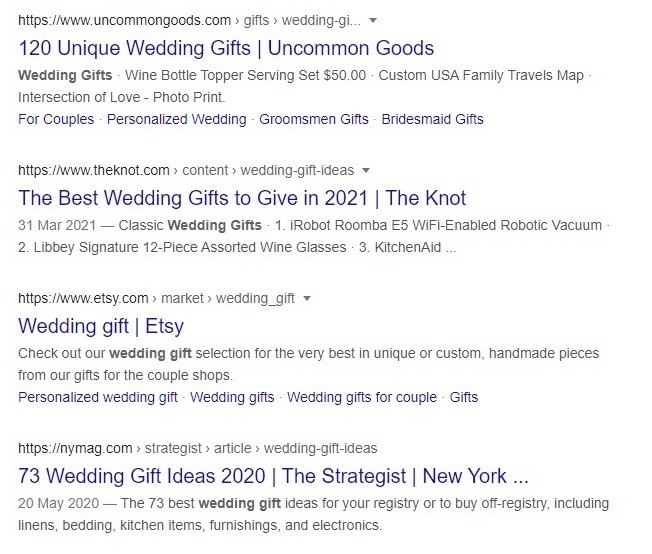Keyword Mapping – The Why, What & How.

Earning organic visits from search engines like Google is hard work. There. I said it. Google increasingly pounds on user experience, and ruthlessly hands out consequences for bounces and short visits. As a result, it has never been more important to know what your ideal client wants and serve it with love and appreciation. To help you make that happen, I interviewed Eugene Nosov about keyword mapping. He is a Partnership Marketing Manager at SEO Powersuite and also a seasoned SEO pro.
- What is keyword mapping?
- Why is keyword mapping important?
- How to determine when to create a content pillar page or a sales / landing page for a keyword group?
- How to solve for the right search intent?
- What to do if you find out that some of your pages compete for the same keyword?
- Are you struggling with keyword mapping or creating keyword focused copy?
But before we dive into the tips he shared, let’s discuss the what and why.
What is keyword mapping?
Most people embarking on an SEO journey start with initial research that roughly consists of the following three steps.
- Gathering as many keywords as you can come up with in a reasonable timeframe.
- Finding out how often these search terms are used in the area you target, and how hard it is to rank for them.
- Filtering out the low-hanging fruit aka the keywords that you can rank for pretty quickly and easily.
Unfortunately, two vital steps are often overlooked.
- Grouping keywords that indicate similar needs for information and should therefore be targeted with the same piece of content
- Turning these groups of keywords into a hierarchical and user-friendly content structure. In a content structure like that, you’ll find general and competitive keywords at the top of the pyramid. Ideally, these represent content categories. The further down the pyramid, the longer the search terms, the lower the average monthly searches, and the more specific the need for information.
These two steps combined, is what we call keyword mapping.
“
Keyword mapping is grouping keywords that indicate similar needs for information, combining these keywords in one piece of content, and making sure that the content is structured in a hierarchical, intuitive structure
Why is keyword mapping important?
People hardly ever visit websites without a clear goal in mind. And yes, one of those goals might be visiting YouTube to simply to be entertained or get their minds off daily reality. But how likely is it that they spend time on your business website to be entertained?
Not. Likely.
Which means, you better help them solve for their need quickly and effortlessly. By finding exactly what they need make the decision ahead of them. Which, ideally, benefits both of you.
Keyword mapping helps you with that because it will show you what information they need.
But wait, there’s more.
When done well, keyword mapping also shows search engines like Google what your field of expertise is and what pages are more important than others. The hierarchy of pages with internal links upwards to the top gives the search bots insights into what content is more important than others.
And this brings me to my interview with Eugene. Because, once you have your keywords grouped and structured, you will need to come up with content that solves for a need for information. And that persuades to action. And that is where many of my clients struggle.
How to determine when to create a content pillar page or a sales / landing page for a keyword group?
Thanks for your help with this, Eugene! One of the issues my clients struggle with is whether to create and build links to a content pillar page or to create a sales / landing page for a major keyword group. Let’s use “wedding gifts” as an example. What would you recommend?
With pleasure, Yvette. First of all, we would need to understand the business behind the website. After all, some solve for other needs than others. Businesses could for instance:
- offer services like custom creating wedding gifts;
- specialize in selling wedding gifts;
- sell all sorts of gifts, including those gifts for weddings.
If you look at the top results for the search phrase “wedding gifts”, you will see that the results are mixed. Some content solves for people who want to check out what is for sale right away. Other content solves for people who are a bit earlier in the buying process and are just looking for inspiration.

Your choice will probably be based on your business goals. If you are the owner of a webshop, you may want to focus on optimizing a category page for “wedding gifts”. If you sell custom gifts or offer related services and you don’t have a webshop, it will be better to create a pillar page or a long form article with tips.
How to solve for the right search intent?
As a general rule of thumb, SEO specialists recommend checking the top search results to discover the search intent for a keyword. But what would you recommend if the top search results show a mixture and there does not seem to be a clear preference between informational, commercial, and transactional intent?
Similar to the previous question, this depends on your business goals and on the top results for the keyword. If the results are mixed, that means search engines will look for the most relevant pages for each category. IN that case, you could use SEO spyglass to estimate how powerful the top results are. That way, you will find out for which of the three search intent options competition is weakest. With that in mind, you could create a page that competes for that category and start building links.
What to do if you find out that some of your pages compete for the same keyword?
Thank you so much, that was really helpful. Now sometimes, my clients notice that some of their pages compete for the same keyword. What would you recommend them?
First, you may want to have a good look at the content of each page. Do they solve for a different need or can they be combined? If you can combine the content into one article, that will improve the user experience and make the one page more powerful.
Next, if the content solves for a different need, however, it may not be smart to combine the content. In some cases, for instance, one page contains a tool and the other page is the user guide. In that case, just make sure the meta description of each page clearly states what to expect when visiting that page. Other than that, there is no need to take action. People who search for that keyword then have the option to visit the page that solves for their need.
Thanks Eugene, that was really helpful. I had a lot of fun interviewing you and would love to do that again in a while. On another, related, topic for instance.
Are you struggling with keyword mapping or creating keyword focused copy?
Let’s chat and get to know each other. If we both feel we resonate, we’ll discuss ways to collaborate.
Photo credit: Ferenc Horvath on Unsplash
More content marketing related articles
How To Become A Trusted Resource By Curating Content
The Revival Of The Marketing Overlay Or (Evil) Popup
About Rainy Days & Compelling Content





